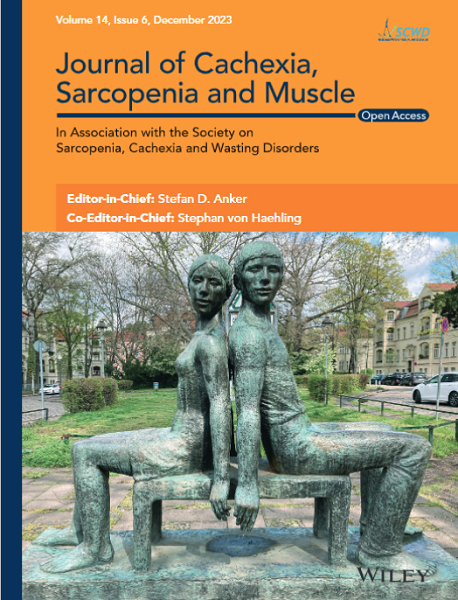PrPC Glycoprotein Is Indispensable for Maintenance of Skeletal Muscle Homeostasis During Aging
Abstract
Background
The cellular prion protein (PrPC), a glycoprotein encoded by the PRNP gene, is known to modulate muscle mass and exercise capacity. However, the role of PrPC in the maintenance and regeneration of skeletal muscle during ageing remains unclear.
Methods
This study investigated the change in PrPC expression during muscle formation using C2C12 cells and evaluated muscle function in Prnp wild-type (WT) and knock-out (KO) mice at different ages (1, 9 and 15 months). To determine the role of PrPC in skeletal muscle homeostasis during ageing, we conducted regeneration experiments via cardiotoxin injection in Prnp mice to assess the effects of PrPC deficiency on the senescence of satellite stem cells (SCs) and regenerative capacity in skeletal muscle.
Results
Our data demonstrate that PrPC expression increased significantly during muscle differentiation (p < 0.01), correlating with myogenin (immunofluorescence at the differentiation stage). PrPC deficiency disrupted muscle homeostasis, leading to age-associated mitochondrial autophagy (Pink-1, +180%, p < 0.001; Parkin, +161%, p < 0.01) and endoplasmic reticulum stress (SERCA, −26%, p < 0.05; IRE1α, +195%, p < 0.001) while decreasing the level of mitochondrial biogenesis (SIRT-1, −50%, p < 0.01; PGC-1α, −36%, p < 0.05; VDAC, −27%, p < 0.001), and activated oxidative stress (serum myoglobin, +23%, p < 0.001; MDA, +23%, p < 0.05; NFκB, +117%, p < 0.05) during ageing, which accelerated reduced muscle growth or mass accumulation (tibialis anterior muscle mass, −23%, p < 0.001; gastrocnemius muscle mass, −30%, p < 0.001; muscle fibre size, −48%, p < 0.05; MSTN, +160%, p < 0.01; MAFbx, +83%, p < 0.05). Furthermore, PrPC deficiency induced the senescence (β-galactosidase, +60%, p < 0.05; p16, +103%, p < 0.001) of SCs, which was directly related to the defect in muscle recovery, with the senescence-mediated enhancement of adipogenesis (PPARγ, +74%, p < 0.05) during the regeneration process after cardiotoxin-induced muscle injury.
Conclusions
Our findings demonstrate that PrPC is indispensable for maintaining skeletal muscle homeostasis during ageing by modulating the functional integrity of mitochondria, ER and SCs.


 求助内容:
求助内容: 应助结果提醒方式:
应助结果提醒方式:


